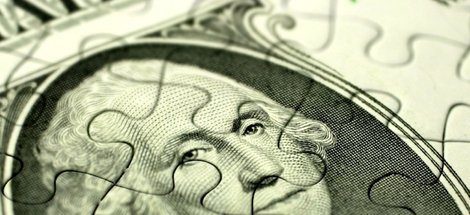Study estimates federal minimum wage increase would help 439,000 Arkansans
by February 11, 2021 3:01 pm 2,955 views

Arkansas’ 3rd Congressional District would have the most low-wage workers to benefit from a federal minimum wage increase to $15 an hour. Still, the head of the state’s chamber says the increase proposal is “clumsy and heavy-handed” and will result in fewer entry-level jobs.
The Raise the Wage Act of 2021, introduced Jan. 26 in the U.S. House of Representatives, would raise the federal minimum wage to $15 an hour by 2025. The minimum wage has been $7.25 since 2009. Arkansas’ minimum wage rose to $11 an hour on Jan. 1, thanks to a voter-approved initiative in November 2018 that raised the state minimum from $8.50 to $11.
The nonprofit Economic Policy Institute (EPI), a Washington, D.C.-based think tank that has advocated for a higher federal minimum wage, said the $15 an hour target would raise wages for 32 million U.S. workers and add $107 billion in annual wages to those workers. The EPI study estimates the average worker would receive $3,300 a year in new wages.
EPI also provided a chart to show the impact of a $15 minimum wage within all Congressional districts. According to EPI, Arkansas’ 3rd district would have the most workers (122,000) to benefit, while the 4th district would have the highest percentage (39%) of available workers to benefit. An increase to $15 an hour would add $1.185 billion in wages for 439,000 Arkansas workers.
Following are EPI estimates on the impact of a minimum wage increase to $15 an hour in Arkansas’ four Congressional districts.
• 1st District (U.S. Rep. Rick Crawford, R-Jonesboro)
102,000 workers would receive a raise, or 37% of the workforce
$15 an hour would generate an additional $264 million in annual wages in the district
Number of workers by demographic
16-24: 29,000
25-54: 56,000
55+: 18,000
Women: 62,000
Men: 40,000
• 2nd District (U.S. Rep. French Hill, R-Little Rock)
106,000 workers would receive a raise, or 31% of the workforce
$15 an hour would generate an additional $308 million in annual wages in the district
Number of workers by demographic
16-24: 34,000
25-54: 56,000
55+: 15,000
Women: 61,000
Men: 45,000
• 3rd District (U.S. Rep. Steve Womack, R-Rogers)
122,000 workers would receive a raise, or 34% of the workforce
$15 an hour would generate an additional $329 million in annual wages in the district
Number of workers by demographic
16-24: 43,000
25-54: 66,000
55+: 14,000
Women: 71,000
Men: 51,000
• 4th District (U.S. Rep. Bruce Westerman, R-Hot Springs)
109,000 workers would receive a raise, or 39% of the workforce
$15 an hour would generate an additional $284 million in annual wages in the district
Number of workers by demographic
16-24: 30,000
25-54: 60,000
55+: 19,000
Women: 69,000
Men: 40,000
Randy Zook, CEO of the Arkansas State Chamber of Commerce and Associated Industries of Arkansas, said he’s not opposed to an increase because “it’s been $7.25 for too long.” But he said jumping to $15 an hour is “bad economic policy” because it doesn’t account for wide cost-of-living differences between the states and even between different regions in a state.
“We oppose this dramatic, radical increase. I mean, why stop at 15? Why not go to 25 or go to 30?” Zook said, adding later that raising the national minimum wage to $15 an hour “will result in fewer people being hired for entry-level jobs because the number of those jobs will shrink.”
A July 2019 report from the Congressional Budget Office estimates the $15 an hour minimum would benefit 17 million U.S. workers but result in the loss of 1.3 million jobs. A $15 an hour boost would reduce by 1.3 million the number of Americans living below the poverty threshold. A $12 federal minimum would benefit 5 million workers, result in 300,000 job losses, and reduce the number of people living under the poverty line by 400,000.
